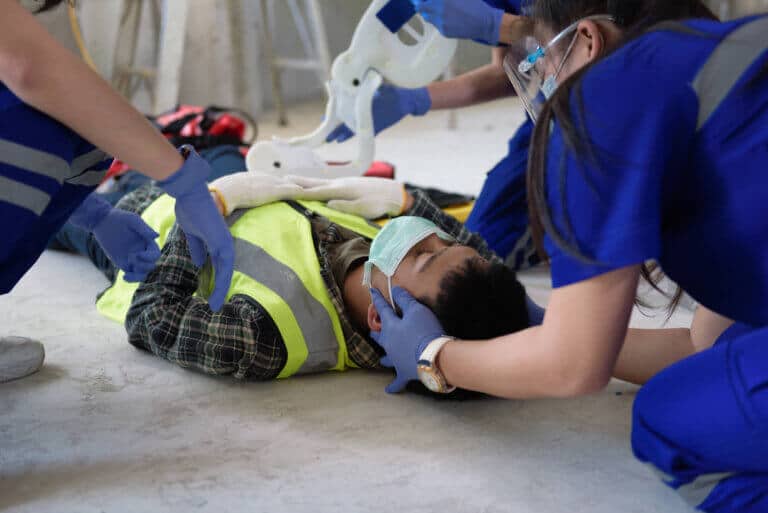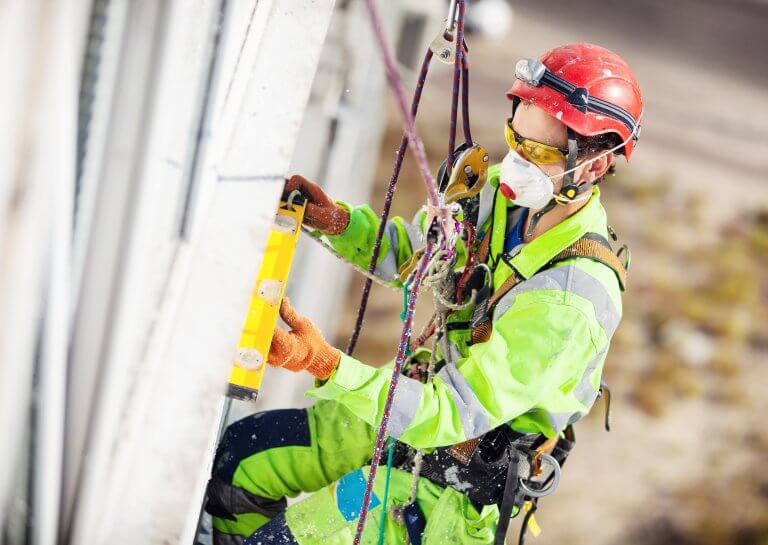The high number of work-related illnesses and accidents that are recorded year after year throughout the world, including Chile, requires companies to be absolutely clear about the laws, regulations and standards that apply in this field. Only in this way will they ensure the occupational health of their workers and, ultimately, the success of their strategic objectives.
Business success must be built on a solid foundation of trust, which includes ongoing security and protection of the workforce. An aspect that, according to the latest studies by the International Labor Organization, ILO, is still very much in arrears throughout the world. In fact, poor working conditions cause nearly 2 million workers each year to suffer from illnesses and injuries that even lead to death.
According to joint estimates by the ILO and the World Health Organization, WHO, most of these deaths are due to non-communicable diseases, including respiratory and cardiovascular conditions. Among these, the following stand out:
- Chronic obstructive pulmonary disease (450,000 deaths).
- Cerebrovascular accidents (400,000 deaths).
- Ischemic heart disease (350,000 deaths).
In turn, injuries caused by work accidents, such as falls, blows, landslides, explosions and other similar events, caused 360,000 deaths, equivalent to 19% of all labor fatalities recorded in a year.
Main occupational risk factors
These figures were counted in a 2016 study, which considered the 19 most common occupational health risk factors, such as exposure to long working hours, pollutants present in the air, asthmatics, and carcinogenic substances. On the other hand the study also mentioned the presence of ergonomic risks and excessive noise.
Of all these variables, the most recurrent was exposure to long working hours (generally beyond the established legal limits), which caused 750,000 deaths in one year.
In turn, exposure in the workplace to air pollution (suspended particles, gases and fumes) caused another 450,000 deaths, which clearly shows the inability of many companies to meet the minimum safety standards established by the respective laws.
A situation that not only affects people’s lives and the very competitiveness of companies, but also has a negative impact on health systems (in a particularly complex time like the current one) and can have a catastrophic effect on the income of homes.
And although deaths from occupational diseases and accidents have been reduced by 41% worldwide during the period 2000-2016, the fact that more than 1,500,000 workers still die each year shows that not all countries and organizations make a fair effort.
In the opinion of Dr. Tedros Adhanom Ghebreyesus, general director of the WHO, “it is shocking to see how many people literally die because of their work, so we want to make a wake-up call to countries and companies, so that they improve and protect the health and safety of workers, fulfilling its commitments to provide universal coverage of health and safety services at work.”
Improve knowledge and enforcement of regulations
The same joint WHO-ILO report shows that more action is needed to ensure healthier, safer, more resilient and socially just workplaces. As well as strengthening the application and promotion of adequate risk prevention programs in each company, in accordance with the respective legislation and international recommendations.
Each risk factor exposed above requires a unique set of preventive actions, which should draw the attention of governments, employers and workers themselves.
For example, preventing exposure to long working hours requires agreement on maximum healthy limits on working time. Whereas to reduce exposure to air pollution in the workplace, dust control and improved ventilation are recommended.
In turn, to prevent accidents resulting from trauma or exposure to equipment or facilities that can cause burns or electric shocks, it is suggested that the delivery and distribution of personal protective equipment, PPE, be properly controlled.
The report also finds that a disproportionately high number of illness- or accident-related deaths occur among workers in South Asia and the Western Pacific, including Latin America. As well as in men older than 54 years.
“These nearly two million premature deaths are preventable. Action is needed based on available research to address the evolving nature of work-related health threats,” emphasizes Dr. Maria Neira, director of the WHO’s Department of the Environment Climate Change and Health.
“Ensuring the health and safety of workers is a shared responsibility of the health and labor sector, as well as governments and companies, as is leaving no worker behind in this regard. In the spirit of the Goals of United Nations Sustainable Development, the health and labor sectors must act together, hand in hand, to ensure the elimination of this great burden of disease”, add the WHO’s specialist.
The WHO and ILO report also states that “the total burden of work-related disease is likely to be much higher, as health losses from various other occupational risk factors will need to be quantified in the future. In addition, the effects of the COVID-19 pandemic will add another dimension to this burden, which should be reflected in future estimates.”
All this lead us then, in reinforcing both the knowledge of current health and labor protection legislation, as well as in supervising its correct application at all levels, and working so that those norms that have lost validity are updated in accordance with the current changes and challenges.
“International labor standards and WHO and ILO tools and guidelines provide a solid foundation for putting in place strong, effective and sustainable occupational safety and health systems at different levels. Their application should help to significantly reduce these deaths and disabilities,” says Vera Package-Perdigao, Director of the ILO’s Governance and Tripartism Department.
What is the legal framework in Chile?
The challenge of the Social Security System present in our country, through the Occupational Health and Safety Policies, is to prevent, reduce or eliminate the sources of occupational risks and provide greater protection against all those situations that may break the balance physical, mental and/or social of a worker.
Therefore, different essential legal mechanisms have been generated for the protection against occupational health diseases and accidents, among which are: the Regulation on Basic Sanitary and Environmental Conditions in Workplaces; the Quality Certification of Personal Protection Elements against Occupational Risks; and the Compulsory Social Insurance against Work Accidents and Professional Illnesses.
All of them are in force until today, and must be known and applied by all companies and organizations.
All these initiatives in terms of safety and health at work are aimed at improving the quality of life and human dignity in the workplace, as well as guaranteeing the adherence of the State of Chile to the different international treaties that promote the recognition of Human Rights. fundamental to human beings.
The regulations in force in our country on worker protection in matters of Health and Safety are contained in the following legal bodies:
- Law 16.744 on Work Accidents and Professional Illnesses, and its auxiliary decrees.
- Labor Code (articles 184 and following).
- Sanitary Code Book III: “Hygiene and Safety of the Environment and Workplaces”.
- Other particular legal texts, given that some employing entities are subject to special legislation and supervision, due to their particular activity.
- Insurance against Work Accidents and Professional Illnesses.
To carry out a safe job, it is necessary to have all the information pertinent to these legal bodies, as well as to carry out constant training of the teams and areas in charge of applying the health and safety regulations at work.
We must also take measures to ensure that all aspects involved are met, such as the tools used in the company, the machines operated, the ergonomic conditions present in the workplace, the environmental or chemical contaminating agents, and the personal protection elements that are required at each particular facility and activity.
This will make it possible to prevent and protect the occurrence of an occupational accident, whether on the road or in person, and from any occupational disease that affects workers. Whether these are dependents (with a work contract) or independent (for fees or self-employment).
Download the DataScope app and start now!
DataScope is the ideal tool to eliminate paper use, save time, and efficiently collect data from the field. It allows companies to streamline, organize and evaluate field work thanks to its online forms, which provide indicators in real time, 100% adaptable to any area.
With DataScope, your team can answer custom mobile forms from their phones or tablets, online or offline, through the app.






